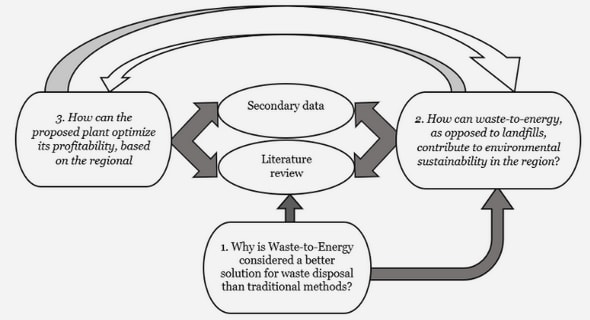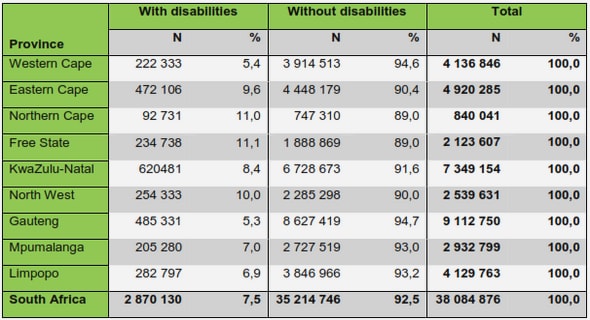Get Complete Project Material File(s) Now! »
Challenges of Effective Community-Based Rehabilitation
Effective community-based rehabilitation is a complex process as the needs and stresses of families living in poverty usually exceed the developmental needs of their children with disabilities (Baxter & Kahn, 1996; Lequerica, 1997). A study by Baxter & Kahn (1996) illustrates the diverse demands exerted on rehabilitation professionals participating in an inner-city EI programme in the USA. The study also highlights the importance of research as a vital component of communitybased rehabilitation since the notion to focus on strengths and needs of families in EI often leaves the specific needs of families and communities unqualified.
The results of the study (Baxter & Kahn, 1996) indicated that the needs identified by the families with infants at risk or with disabilities were very similar and in order of importance, related to food needs, housing, transportation, medical needs, needs for the child and caregiver’s needs for personal time. The developmental needs of the infant with disabilities were therefore not the most important needs perceived by the families.
The families further indicated that their limited resources were the major cause of their stresses. There can, however, be different contributors of stress when dealing with families from various backgrounds. McDowell, et al. (1995) found in a study conducted in South Carolina that declines in financial status were the major stressors for black families. White families whose children had the same developmental delays as the black families experienced the slow developmental progress of their child as the major source of stress. Baxter and Kahn (1996) concluded that chronic life stressors, rather than discrete life events contribute to high levels of stress in families living in poverty. These findings also confirm Guralnick’s conceptual model of early development and risk factors in which information needs, interpersonal and family distress, resource needs and confidence threats are identified as potential stressors for families with a child with a disability (Guralnick, 1997).
Another problem area that seems to be widespread in community-based intervention is the poor attendance of clients in intervention programmes. In a study conducted in Chicago the children’s attendance of therapy was more consistent if the families received financial and social support. Another reason for consistent attendance in therapy related to the severity of the child’s disability. If the parents perceived the child’s problem as severe, attendance was more consistent. Other factors that influenced therapy attendance were the number of siblings in the family, which meant that the mother had additional childcare burdens. The last factor to significantly influence therapy attendance was the father’s educational level. The higher the father’s education, the better he recognized the importance of intervention and the stronger he supported the mother in attending therapy sessions (Kuchler-O’Shea, Kritikos & Kahn, 1999).
A similar study conducted in South Africa indicated that therapy attendance also relates to financial factors (Bulmer, 1999). The study was conducted at a clinic for children with cerebral palsy at the Chris Hani Baragwanath Hospital serving a large peri-urban community. The parents indicated that the main reason for terminating therapy was the lack of funds for transport to attend the clinic. The parents in the South African study did not receive financial assistance although the therapy sessions were fully subsidized. Once more, the first barrier in the intervention process was the financial status of the family and not external factors such as the availability of transport. The examples from the different studies reviewed serve to illustrate the necessity of a comprehensive systems approach to ECI service delivery in communitybased rehabilitation and in dealing with families living in poverty.
PROFILE OF CLIENTS REQUIRING ECI IN SOUTH AFRICA
Although people with communication disorders have always been at least 10% of the total population of South Africa (Uys & Hugo, 1997) the caseload has now increased and the profile of clients have changed drastically in the past decade.
As a result of poor recognition of the profession of speech-language therapy in general and ECI in specific, as well as limited service delivery, a detailed profile of the South African population of infants with communication disorders remains largely unknown and indicates the crucial need for empirical survey studies. In an attempt to answer the question relating to the characteristics of clients requiring ECI, a literature survey was done to provide broad features of the population, which will serve as a basis for the essential components of a computer database for ECI to be developed in the empirical study. In an overview of articles by Aron (1991), Hugo (1998), Pickering, et al. (1998), Tuomi (1994), Uys (1993), Uys and Hugo (1997) and data released by Central Statistical Services (1997a; 1997b; 1997c) the population of young children with communication disorders and their families in South Africa will be described in terms of their different home languages and cultures, the literacy rate and ages of their parents and the different risk conditions to be found in the infants.
CHAPTER 1 A RATIONALE FOR DEVELOPING THE FIELD OF EARLY COMMUNICATION INTERVENTION IN SOUTH AFRICA
1.1 INTRODUCTION
1.2 RATIONALE FOR DEVELOPING ECI IN SOUTH AFRICA
1.3 SOUTH AFRICAN NATIONAL HEALTH POLICY AND DISABILITY STRATEGY
1.4 STATEMENT OF PROBLEM AND RATIONALE
1.5 TERMINOLOGY
1.6 ABBREVIATIONS
1.7 USE OF ITALIC TYPE IN THE THESIS
1.8 ORGANISATION OF THE STUDY
References
Appendices
1.9 CONCLUSION
1.10 SUMMARY
CHAPTER 2 AN OVERVIEW OF BEST PRACTICE IN EARLY COMMUNICATION INTERVENTION
2.1 INTRODUCTION
2.2 THE EFFECTIVENESS OF ECI
2.3 FRAMEWORK FOR BEST PRACTICE IN ECI
2.4 CONCLUSION
2.5 SUMMARY
CHAPTER 3 STRATEGIES TO DEVELOP EARLY COMMUNICATION INTERVENTION IN THE SOUTH AFRICAN CONTEXT
3.1 INTRODUCTION
3.2 CHANGES IN HEALTH CARE IN SOUTH AFRICA
3.3 CHANGES IN EDUCATION FOR CHILDREN WITH SPECIAL NEEDS
3.4 CURRENT VIEWS ON REHABILITATION OF PEOPLE WITH DISABILITIES
3.5 PROFILE OF CLIENTS REQUIRING ECI IN SOUTH AFRICA
3.6 CONCLUSION
3.6 SUMMARY
CHAPTER 4 DATABASE SYSTEMS IN EARLY COMMUNICATION INTERVENTION
4.1 INTRODUCTION
4.2 INFORMATION TECHNOLOGY IN SPEECH-LANGUAGE PATHOLOGY RESEARCH
4.3 FEATURES OF RELATIONAL DATABASE SYSTEMS
4.4 DATABASE SYSTEMS AS MANAGEMENT TOOLS IN EI
4.5 DATABASE SYSTEMS AS RESEARCH TOOLS IN EI
4.6 APPLICATIONS OF THE USE OF DATABASE SYSTEMS FOR ECI
4.7 ECI RESEARCH RELATING TO RISK POPULATIONS IN SOUTH AFRICA
4.8 CONCLUSION
4.9 SUMMARY
CHAPTER 5 METHODOLOGY
5.1 INTRODUCTION
5. 2 AIMS OF THE STUDY
5.3 RESEARCH DESIGN
5.4 SUBJECTS
5.5 MATERIALS AND APPARATUS
5.6 PROCEDURES
5.7 CONCLUSION
5.8 SUMMARY
CHAPTER 6 RESULTS AND DISCUSSION
6.1 INTRODUCTION
6.2 DESCRIPTION OF THE SUBJECTS’ CHARACTERISTICS
6.3 ANALYSIS OF THE DIAGNOSTIC CLASSIFICATIONS FOUND IN THE SUBJECTS
6.4 CHARACTERISTICS OF THE SUBJECTS IN THE PERINATAL AND POSTNATAL PERIODS
6.5 CHARACTERISTICS OF THE SUBJECTS’ FAMILIES
6.6 CONCLUSION
6.7 SUMMARY
CHAPTER 7 CONCLUSIONS AND IMPLICATIONS
7.1 INTRODUCTION
7.2 CONCLUSIONS
7.3 IMPLICATIONS
7.4 CRITICAL REVIEW OF METHODOLOGY AND RESULTS
7.5 RECOMMENDATIONS FOR FURTHER RESEARCH
7.6 CONCLUSION
7.7 SUMMARY


